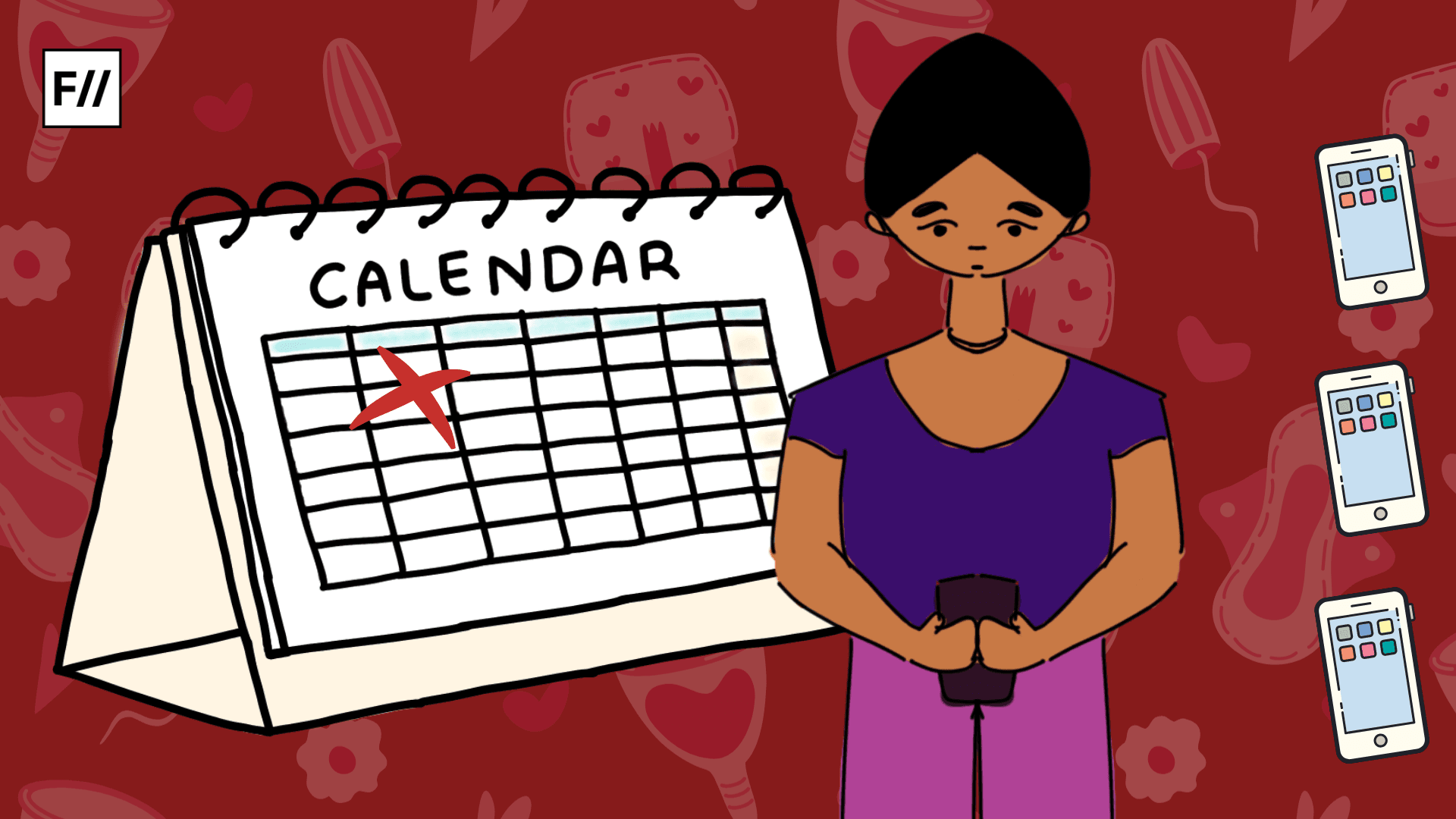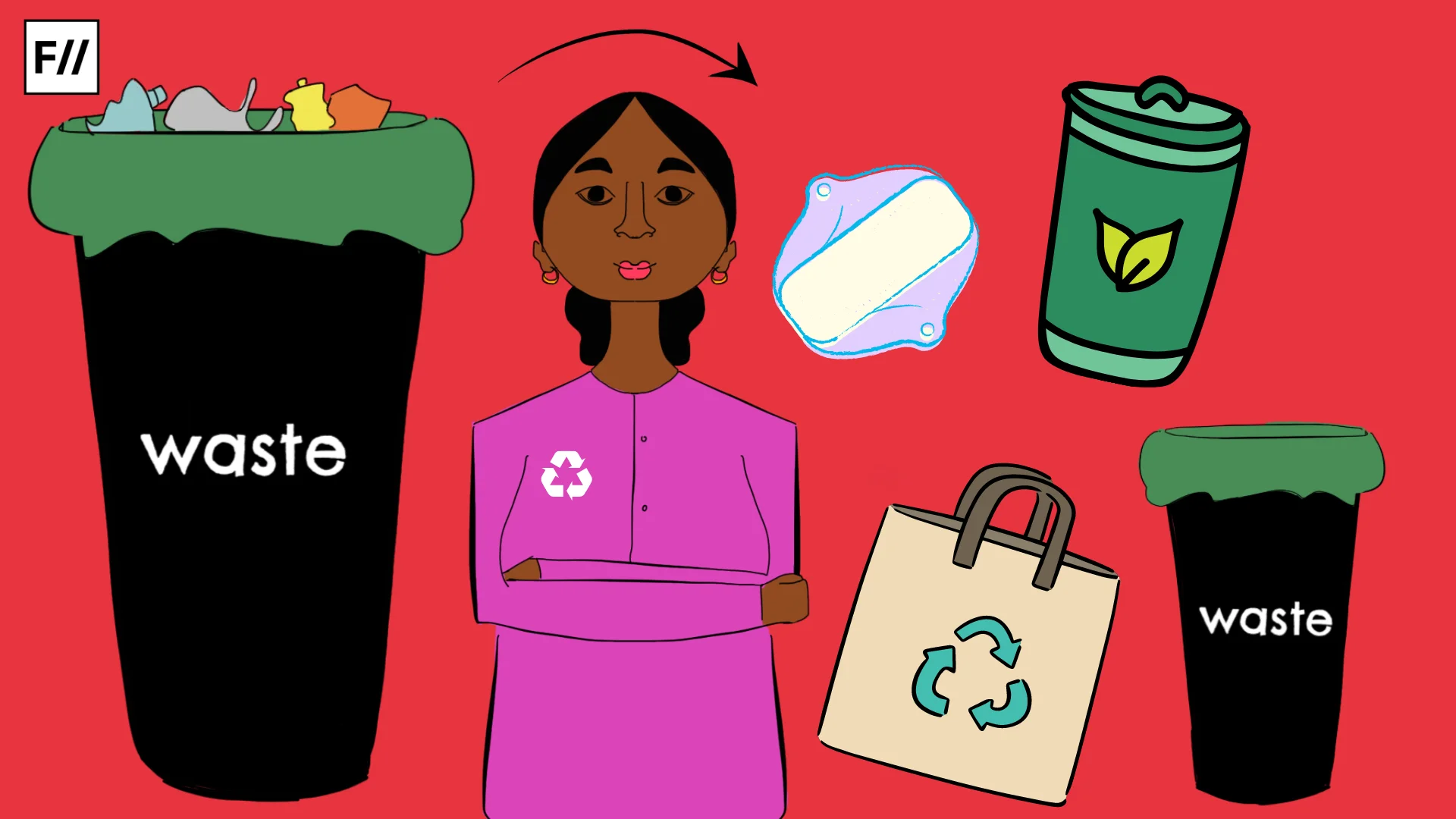Menstruation is an intersectional experience and is influenced by various identity factors, including age, occupation, class, culture, politics, and religion, as well as the menstruator’s own self-perceptions. In some cultures, menstruating women are recognised as needing rest; in others, they are ostracised. Across geographies, menstruation is associated with dirt and shame, putting pressure on menstruators to hide evidence of menstruation from public view, if not also in private, making it the ‘ultimate taboo.’
For many menstruators, the monthly menstruation experience is a dreaded time and shrouded in myths of impurity. Period tracking applications (PTAs) are regarded as helping menstruators to manage their period digitally and improve their self-understanding. However, PTA usage can have sinister consequences. While purporting to be liberating, informative, and private, they extend normative ideas of menstruation and personhood and promote an agenda of menstrual management tied to economic ambitions, all the while eroding menstruators’ privacy and security.
Period tracking apps and monetisation
Some predict that by 2027, the femtech global market for digital women’s health products and services will be worth USD 60 billion, with India having about 408 femtech start-ups and a revenue of 3.6 percent of the global market. About 25 percent of the world’s population lives in South Asia, with less than 50 percent of the population using the internet, with wide variations across socio-economic and urban/rural divides. Generally, women are 37 percent less likely than men to have internet access across different contexts. However, menstruators with internet access on their mobile phones are increasingly using PTAs to help them manage their menstruation.

PTAs enable the scrutiny and analysis of menstrual cycles, health and wellness factors such as workout routines, nutrition and diet regimes, and family planning. The home screens of PTAs typically display a numerical visual and/or graphic illustration with a countdown to the beginning of the next period or ovulation. PTAs also track symptoms such as sleep patterns, contraceptives, physical and sexual activity, effluvia, medication, and food cravings. PTA menstrual calendars provide statistical information on average cycle duration, changes in body weight, body temperature, and other details, often as graphs, tables, and numerical visuals.
Menstruators using PTAs input personal body data and accept the app will generate algorithmic data to give them calculated, personalised outputs. A feedback loop is created between the app and the user, where continual data exchanges fine-tune the self-tracked digital output. Machine learning structures ensure that the greater the input of information, the more accurate the feedback from the app. As Karlsson explains, “… to gain knowledge about one’s own body entails giving away access to data generated from that same body.” In this sense, the PTA user is a ‘prosumer,’ one who produces and consumes data.
The usefulness of PTAs depends entirely on reliable data and information inputs. If a user’s cycle changes or their period is late, they may not realise it if they do not keep track of it on the PTA. This could mean that the app could make a wrong prediction, which could make it stressful for the user, and they may even begin to doubt their own body rather than the app’s accuracy.
To keep the PTA, accurate users must stay engaged with the app and keep it updated. The longer a user tracks their cycles, the more data the PTA’s algorithm has to work with, and the more likely it is to be focused on being personalised. The usefulness of PTAs depends entirely on reliable data and information inputs. If a user’s cycle changes or their period is late, they may not realise it if they do not keep track of it on the PTA. This could mean that the app could make a wrong prediction, which could make it stressful for the user, and they may even begin to doubt their own body rather than the app’s accuracy.
PTAs are empowering?
Some proponents of datafication argue that PTAs are empowering because they distance menstruators from the visceral, physical, sensory experience of the period by allowing them respite from their socio-culturally constructed contexts of impurity. The data derived from calculations centred on menstrual blood are seen as providing a ‘clean,’ representation of information about a menstruator’s body. Quantification disinfects the dirt embedded in the PTA user’s understanding of their menstrual blood and creates mathematical distance with their embodied self-perceptions, which include their understanding of their bodies and sense of self.

Data from apps is presented as cleansed, and when returned to the user, it is offered as empowering and giving increased agency. PTAs give menstruators access to the ‘privileged world of dataism,’ and personalised knowledge about their own body and behaviour. PTAs are also arguably de-stigmatising, radicalising, and feminising patriarchal structures that have thus far underpinned women’s health and autonomy. Users’ access to quantified data about their menstrual cycles enables them to better manage their menstruation. Indeed, the control that PTAs have over the quantification and codification of menstrual data is seen as a way of helping and improving the menstruator’s experience.
Purification for greater self-understanding
How a PTA user perceives their menstrual blood changes when they see how it becomes digitised, and this alters again when they see how digital information is exchanged across platforms; the perceived dualism between heteronomy and autonomy shifts. The object-subject dichotomy is transformed by digitisation. PTAs render the line between technology and the body less visible. The quantification of menstrual data implies that what is being measured is being ‘cleansed,’ or sanitised because it was previously unclean. When ideas and things become connected, notions of how people relate to them changes.

As Capurro notes, “Digitisation changes the anthropological self-understanding of encapsulated world-less subjects facing objects in the so-called outside world.” Because of the menstruator’s inputs on PTAs of intimate and personal information, they are affected by this interplay between themselves and their data. Data, as opposed to raw information, creates a more manageable dualism of the subject and the object of the data. The separation from the ‘unclean,’ provided by quantification and the calculative engagement of the self with that produced by the bodily self, encourages awareness and knowledge on how users can manage their periods more systematically and even more hygienically.
However, PTAs are not entirely benign. They are also bio-political instruments which promote normative, privileged notions of what should constitute a healthy menstruation experience. Indeed, the act of measurement is political, as are all technologies of measurement that legitimise certain forms of knowledge and experience and further enhance the ‘datafication,’ of the person through their engagement with data. Through PTAs, menstruators engage with calculative forces that quietly prescribe bodily aspirations. The apps instill reflexive self-monitoring practices with a legitimacy derived from data collected from other PTAs, which users accept to be part of and allow statistical standards and comparisons with other data. This data is offered back to users and influences them to assess and reassess themselves. PTAs make suggestions as to what constitutes normal and normative behaviour based on the users’ tracked menstrual data, which has the effect of creating and cultivating the idea of a disciplined and organised new ‘woman or menstruator.’
As such, PTAs are digital ‘technologies of the self,’ that allow menstruators to reflect and act on their bodies and thoughts, actions and way of being in a way that transforms them to attain a certain state of ‘happiness, purity, wisdom, perfection, or immortality.‘ In the process, users mobilise norms which make their bodies more manageable, and in so doing, they become managed and regulated as consumer subjects.
Liberation in closed spaces
The calculative outputs of PTAs reveal as much as they hide. They carry presumptions of truth about medical science, the legitimacy of big-data analysis, and the propriety of algorithmic complex functions. They are offered as customised and on private platforms, encouraging menstruators to act with agency on the data presented as transparent, robust, and objective, and offering users the foundation and opportunity for reimagining their established and conventional gender norms and prescribed notions of femininity.
PTAs embody a potential for user-reflexive expression and understanding of self. They offer users an escape from their oppressive real-world contexts to a virtual space where enhanced body self-care and self-knowledge is possible, and where they feel emancipated and have the freedom to interact with agency and awareness based on truths derived from their own, personalised data. However, at the same time, PTAs are silently advancing idealised notions of private, calculative, and transparent spaces. They are insidiously creating and upholding invisible structures of normalised and privileged ideas of menstrual health and the feminine ideal. Under the guise of empowerment and freedom, PTAs are extending the reach of reconstituted economic and social norms, which are imprisoning their unknowing users. Aside from this, there is also an erosion of user rights relating to their privacy and security.
Loss of rights
PTAs limit and erode the reproductive autonomy and privacy of users because the data derived from PTAs could be used to identify and prosecute users seeking to terminate a pregnancy. Privacy, legal, and human rights experts are concerned that intimate data stored on PTAs, including sexual activity, contraception, and period cycles (from which information on abortions or miscarriages maybe inferred), could likely be subpoenaed in investigations of potential abortion cases by law enforcement and regulatory authorities and used to prosecute women.
Reproductive health data, including menstrual blood data, has become particularly sensitive following the US Supreme Court’s decision to overturn the constitutional right to an abortion and President Trump’s global gag order on all abortion-related medical support.
Erosion of privacy by PTAs
In a digital economy, privacy of information is often a relegated concern. Through PTAs, menstruators’ data becomes everybody’s data. The PTAs collect intimate bio-data, which is extracted, analysed, repackaged, and aggregated into macrodata to make it personally customised and relevant to the user. This data is in a format that has commercial, managerial, and research value and is commodifiable and re-sellable. Most app menstruators freely relinquish their personal data so they can receive personalised information about their bodies and their selves. Menstruators tend not to see volunteering personal information as problematic because the PTA promises to deliver new insights about an ‘improving,’ self.

PTA menstruators are typically not aware that the personal information they input into apps may also be sent to third parties. One app has been reported to have been “… sharing some data with Facebook even before the user agrees to the app’s privacy policy.” The data shared by PTAs includes personal information about menstruators’ health, moods, sexual activity, etc. In this way, the PTA producers have access to market-segmented information and can target viable consumers. Typically, the app provider’s intent is to utilise the data to send out targeted adverts and develop consumer-related correlations which have commercial value. Advertisers monitor the PTA user’s moods and desires to make relevant product offerings. For instance, a user experiencing pre-menstrual symptoms could be targeted with adverts for chocolate and pain relievers.
A recent study (2024) examined the privacy policies and data safety labels of twenty popular reproductive health apps. It found a range of poor data-management practices, including some apps not having a delete function, even for information such as menstrual cycles and miscarriages. Additionally, the research revealed that 35 percent of apps claimed not to share personal data with third parties, but this was contradicted in their privacy policies. Half of these assured menstruators that health data would not be shared with advertisers but were ambiguous about other data collected. 45 percent of privacy policies denied responsibility for third-party practices, despite claiming to vet them.
As Dr Ruba Abu-Salma, notes, “While female health apps are vital to the management of women’s health worldwide, their benefits are currently being undermined by privacy and safety issues. Mismanaging or leaking reproductive health data can lead to dire consequences, with blackmail, discrimination, and violence being among the worst.”
Currently, hardly any PTAs address the urgent sensitivity of menstrual data with regard to law enforcement in their privacy policies and offer safeguards for users’ data against legal threats. Governments should implement stricter regulations on data collection and usage. PTA developers need to be more transparent in their privacy policies, utilise encryption, and protect menstruator’s data from third parties. Additionally, they should provide user control over data sharing and prioritise user safety by not treating menstrual data as just more data as opposed to distinctively, confidential health data related to a person’s intimate and personal detail, which has the potential to stigmatise or criminalise them. Users, on the other hand, should be more aware of their privacy, review privacy policies before using apps, and be aware of the risks associated with PTAs.
About the author(s)
Farah Ahamed’s writing has been published in Ploughshares, White Review, LA Review of Books, Massachusetts Review, World Literature Today, Markaz Review amongst others. She is the editor of Period Matters: Menstruation in South Asia, Pan Macmillan India, (periodmattersbook.com.) which has been described as ‘an essential book about the female body that dispels misconceptions,’ by Book Riot. You can read more of her work at: farahahamed.com.





